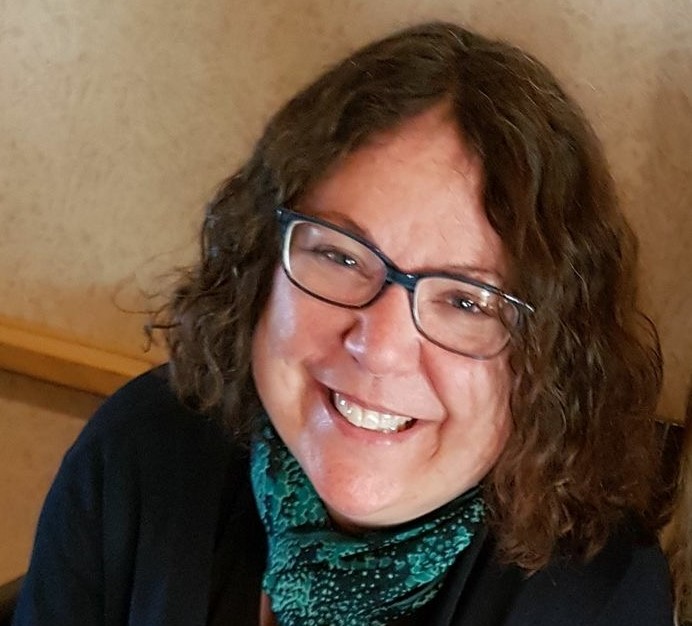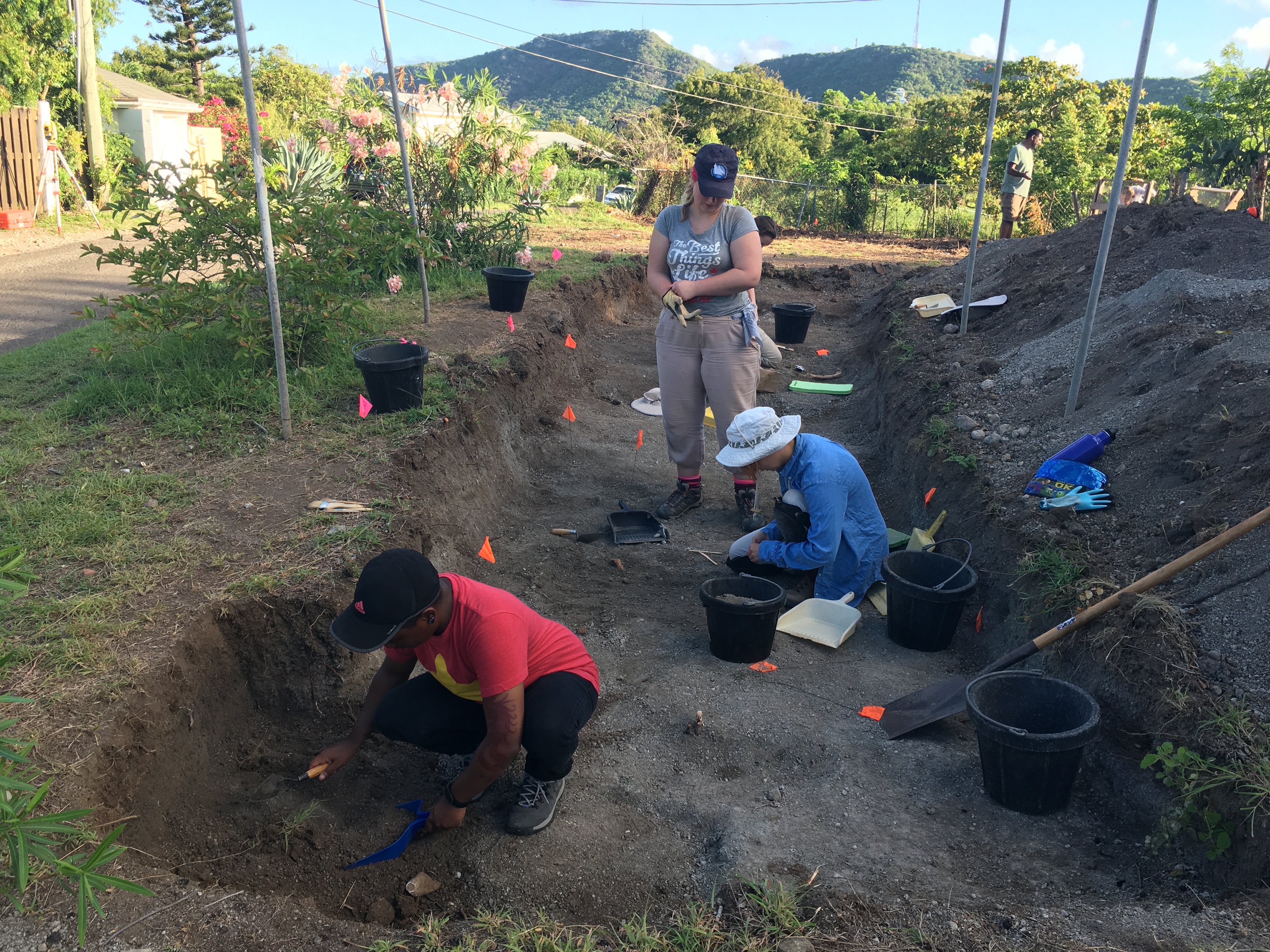Antigua is a beautiful tropical island in the West Indies, but it is this country’s fraught history that’s been bringing Lakehead anthropologist Dr. Tamara Varney back there for over 25 years.
“It’s a former British colony, so everywhere you look there’s the remains of old windmills and sugar cane plantations that were run using slave labour,” Dr. Varney says. “In the West Indies, the British found it more economical to work slaves to death and then replace them with new slaves.” The use of enslaved labourers was not confined to plantations—it played a key role in the military as well.
In the late 1700s and early 1800s, Antigua was also the home of a British Royal Navy dockyard located by “a deep natural harbour that allowed the British to keep most of their fleet in the Caribbean throughout the hurricane season,” Dr. Varney says. “During the Napoleonic Wars, this meant the British could guard islands under their control and raid islands controlled by France and other European powers throughout the year.”
Next to the Royal Navy Dockyard was a naval hospital and cemetery, and it is the cemetery that’s been Dr. Varney’s focus since 1998 when she was a PhD student at the University of Calgary.
“Reg Murphy, a friend and archaeology PhD student from Antigua, was looking for a biological anthropologist to excavate the cemetery,” she says. It was necessary to begin the Royal Navy Cemetery dig as quickly as possible because housing developments were creeping onto the abandoned burial grounds.
“I was brought in to do a basic forensic analysis of the bones and determine age of death, height, habitual-activity markers, evidence of disease, sex, and ancestry,” Dr. Varney says.
Who was buried in the cemetery and what did they die of?
When the dig began, Dr. Varney assumed she’d be unearthing the graves of British sailors, and, in fact, some low-ranking sailors were buried in the cemetery. Many of the skeletons, however, were likely those of enslaved Black dockyard workers.
“In colonies like Canada, dockyards were staffed by white people, but in the Caribbean, they were run by white officers overseeing African and African-descended slaves owned by the British Crown who were called the King’s Negroes.”
These slaves began working in the dockyard as boys where they were trained to become shipwrights, sailmakers, masons, and other highly skilled tradesmen. They had a very different life from the enslaved men and women working on plantations. Naval-owned slaves were provided with the same hospital care and food and rum rations as other naval personnel.
At first, the archaeological team believed that the cemetery was the burial place of victims of an infectious disease epidemic that had swept through the dockyard. As they excavated, though, instead of uncovering a mass grave that would have been evidence of an epidemic, they discovered individual graves—meaning that the deaths had occurred over a longer period of time, and not during an epidemic.
Nonetheless, Dr. Varney and her team were able to confirm through parish records that yellow fever and other infectious diseases were responsible for many deaths. The skeletons themselves appear to be in relatively healthy condition. “Infectious diseases kill so quickly that they don’t have time to damage a person’s bones,” Dr. Varney explains.

Dr. Varney's fascination with archaeology began when she was a 13-year-old junior high student living in Sudbury and she, her father, and her mother took a course certifying them to do underwater shipwreck surveying. "I decided that I wanted to keep doing archaeology, just not underwater," she says.
Dr. Varney’s investigations have also determined that the Black dockyard workers frequently lived to around 50 to 60 years of age—longer than most of the British sailors.
“The enslaved workers grew up on the islands, which acclimated them to the heat and gave them greater immunity to disease, resulting in longer life expectancies. In addition, the dockyard workers’ diets were better than that of a typical plantation slave.”
Despite the slightly better diet, it was an extremely hard life and “if a slave was caught engaging in any activity construed as rebellious, they would be burned alive, or their bodies would be broken and crushed to death on the wheel (a large wooden wheel with metal spikes).”
European sailors tended to die around the age of 30, not only due to their susceptibility to disease, but because they were often in bad shape when they arrived in Antigua.
“Sailors were regularly press ganged into the navy. Naval personnel would go to local pubs and gather up young men and boys, march them onto a ship and say, ‘Guess what, you’re in the navy.’ Then they’d spend weeks crossing the Atlantic subsisting on food that was often spoiled.”
Yo-ho-ho and a bottle of rum?

The large size of the cemetery and the different lines of questioning being pursued by the excavation team has made this a long-running dig. In 2016, the dockyard and its related archaeological sites were designated a UNESCO World Heritage site, which has given the team more resources for their work.
Dr. Varney suspected that lead poisoning was another significant cause of illness and death. “Lead was used everywhere in the 1700s and 1800s, which made lead poisoning common,” she says.
Since 2009, Dr. Varney has been working with co-investigators from King’s University, the University of Saskatchewan, Canadian Light Source Inc., MacEwan University, and Memorial University to study traces of lead found in the naval cemetery skeletons.
“The secret of my success,” she says, “has been collaborating with an interdisciplinary team. We couldn’t achieve what we have by working alone.”
To analyze lead levels, Dr. Varney and her team use a synchrotron—a football stadium-sized machine that produces brilliant light that can be used for x-ray fluorescence imaging—to determine when during their lifetimes the individuals absorbed lead into their skeletons and if the lead was absorbed before or after death.
“I previously thought that rum was the source of lead contamination in the Royal Navy Cemetery skeletons,” Dr. Varney says. At that time, the navy gave every sailor a daily tot of rum with lime juice added to it to stave off scurvy (and to make the rum go sour so that sailors couldn’t save it up and go on binges). Unfortunately, the alcohol was made with lead equipment, causing the toxin to leach into the rum.
Dr. Varney is now convinced, however, that the lead poisoning was related to the type of work a particular dockyard worker or sailor was doing, since lead levels vary widely among the skeletons. “A young person could have high lead levels, and an older person could have low lead levels.”
Other potential sources of lead contamination include water cisterns and roofs lined with lead, medicinal compounds, sweeteners, and ceramic plates and cookware with lead glazes.
Dr. Varney is now excited to be collaborating with ancient DNA experts from Germany’s renowned Max Planck Society who are examining the bones for ancestry markers and pathogens.
“In archaeology we sometimes discover material about ordinary people that’s not in the historical record, since the historical record tends to focus on higher-status people,” Dr. Varney says. “That’s why I love the work I’m doing in Antigua. It gives meaning and dignity to the lives of those who were overlooked.”


